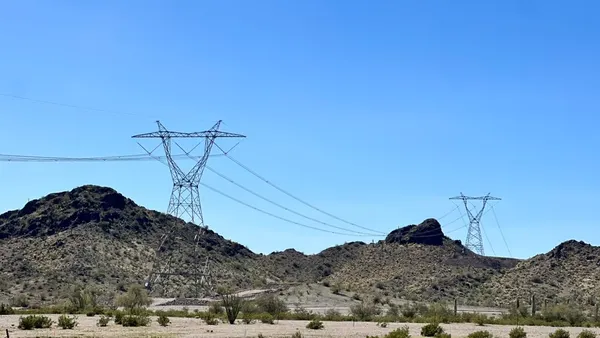Dive Brief:
-
The PJM Interconnection is proposing to overhaul its interconnection study process by moving to a “first-ready, first-served” approach that reviews proposals and assigns upgrade costs in clusters, according to a Tuesday filing at the Federal Energy Regulatory Commission.
-
The proposal, which was widely supported in an 18-month stakeholder development process, also aims to clear out a backlog of pending interconnection requests, in part by using an expedited process for projects that require zero or minimal grid upgrades. If approved, the grid operator expects to review interconnection applications filed after Oct. 1, 2021, starting in early 2026.
-
“The proposed reforms will allow for significant improvements in the timely processing of existing interconnection requests as well as of new service requests … and will more effectively clear the existing interconnection study backlog which will enable PJM to support federal and state public policy (including various renewable and clean energy initiatives),” the grid operator said.
Dive Insight:
Like other grid operators, PJM has seen a surge of renewable energy and energy storage projects filing interconnection applications so they can connect to the grid, which has led to delays in a study process that was largely designed for reviewing interconnection requests from conventional power plants.
During the interconnection review, PJM studies how proposed projects would affect the grid, determines what upgrades are needed to bring them online, and allocates those costs. Typically, project developers cannot finance their facilities until they have obtained an interconnection agreement at the end of the review process.
PJM had 2,700 projects in its interconnection queue, representing more than 250 GW, as of May 10, the grid operator said in its application to FERC.
While the volume of applications has led to delays, so have “speculative” projects that withdraw late in the review process, triggering the need to take another look at how the remaining proposals would affect the grid, according to PJM, which operates the grid and wholesale electricity markets in 13 Mid-Atlantic and Midwestern states, plus the District of Columbia.
The withdrawals create significant cost uncertainty for lower-queued projects, which may cause those projects to exit the process, causing a cascade of withdrawals, PJM said.
In response, PJM worked with stakeholders to develop a plan that calls for conducting system impact studies and cost allocation for groups of projects, or clusters, instead of using the current project-by-project approach.
The change is designed to streamline the study process, reduce restudies, and reduce cost responsibility and cost allocation disputes, the grid operator said. The proposed rules would affect interconnection applications made after Oct. 1, 2021.
PJM also proposed new requirements, such as “readiness deposits,” that aim to weed out more speculative projects.
In addition, PJM proposed a transition process for reviewing pending applications. The grid operator expects to review about 450 proposals that require no more than $5 million in upgrades in a “fast lane” process it estimates it will finish by 2025.
PJM intends to clear out the remaining interconnection applications using two “transition” review cycles, with the first finishing in mid-2025 and the second wrapping up a year later.
PJM expects to begin reviewing new interconnection applications in early 2026, according to the proposal.
“The transition period procedures balance the interest of mature projects that have substantially completed the interconnection process in moving forward while at the same time allowing PJM to implement its new procedures in a way that does not increase the backlog,” the grid operator said.
PJM asked FERC to approve the proposal by Oct. 3. The grid operator urged FERC not to delay approving the plan even as the commission considers issuing its own interconnection reform proposal.















